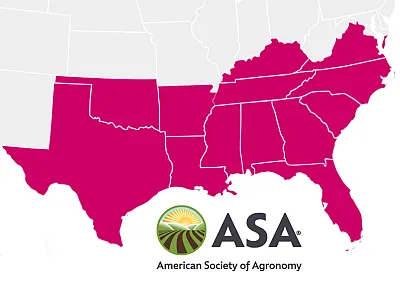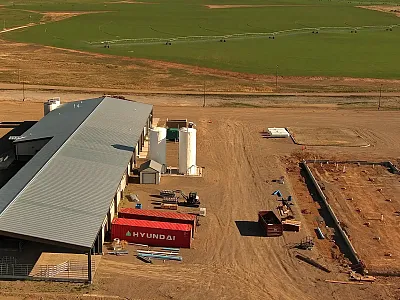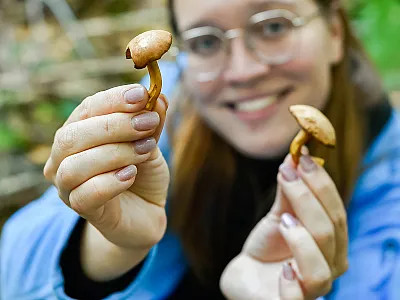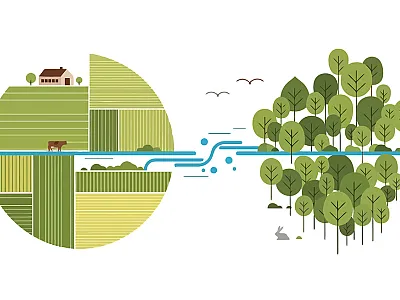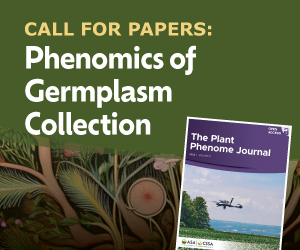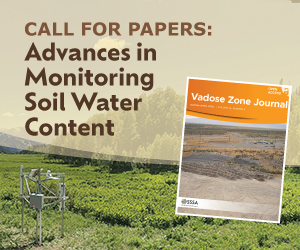Critical Challenges, Cooperative Solutions
Sustainable Intensification of Agriculture With the USDA Long-Term Agroecosystem Research Network
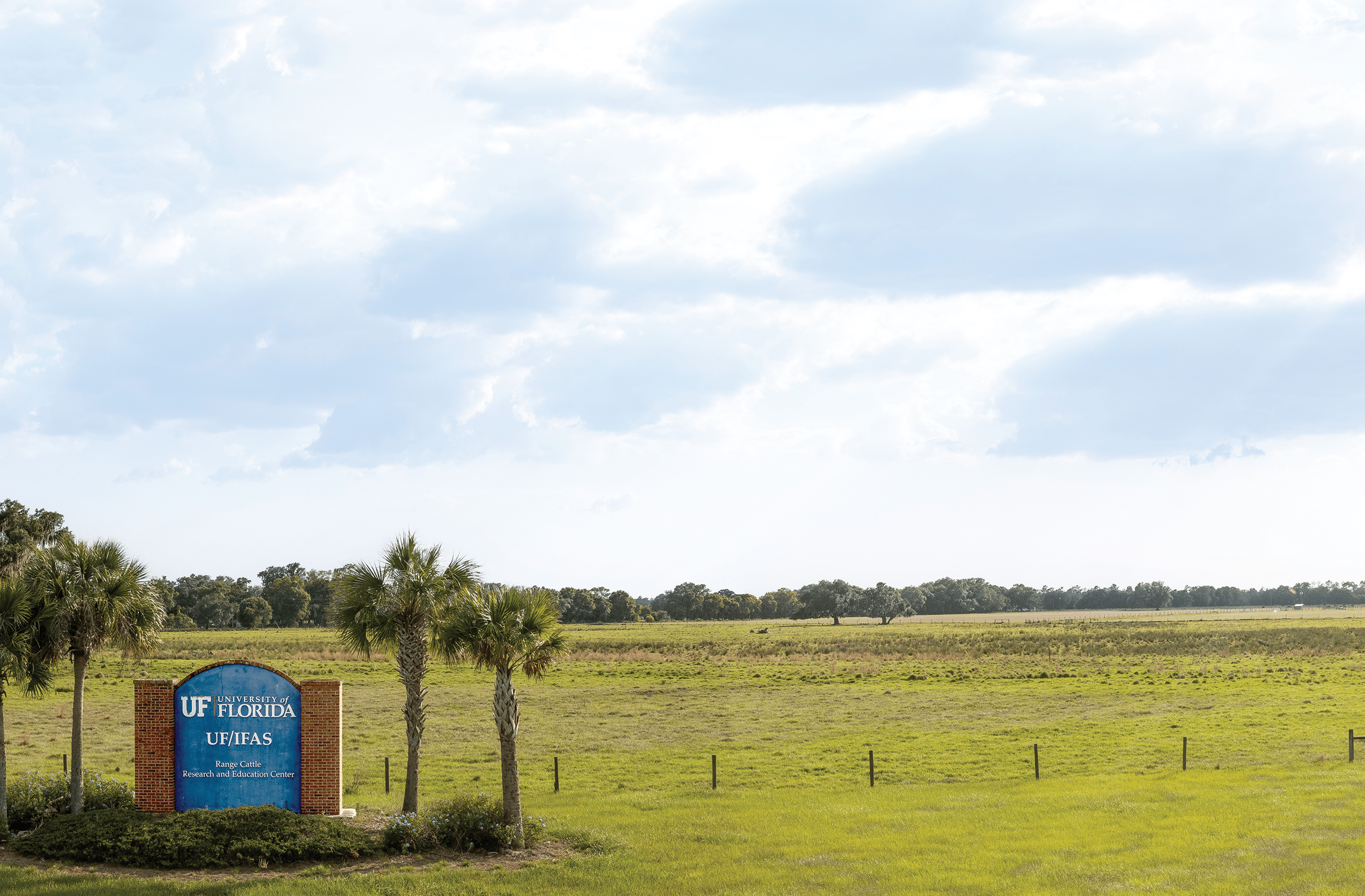
Agriculture in the United States faces significant challenges, including food insecurity, climate change, environmental degradation, and rural prosperity issues. The USDA Long-Term Agroecosystem Research (LTAR) Network, which comprises 18 national sites, aims to address these challenges through sustainable intensification. Each site conducts a “Common Experiment” to compare traditional management practices with new alternative strategies. Upcoming special sections in the Journal of Environmental Quality will highlight the LTAR Network’s work and progress in implementing these experiments nationwide.
From sea to shining sea and between amber waves of grain and fruited plains, agriculture in the United States is up against serious challenges. While the details differ for fruit farms in the Central Valley, dairy farms in New York, and everything in between, the obstacles remain the same: food insecurity, climate change, environmental degradation, and rural prosperity.
The USDA Long‐Term Agroecosystem Research (LTAR) Network formed in 2012 to address these challenges on a national, cooperative scale with sustainable intensification, an approach that grows yields while conserving resources and providing positive environmental and socioeconomic benefits. Including 18 site locations encompassing croplands, grazing lands, and integrated systems combining the two, the network brings together USDA‐ARS sites, universities, and research institutions engaged in well‐established, long‐term research projects.
“The thing that is unique about LTAR is we’re each individual sites doing these experiments, but at the end of the day, the whole outcome is to hopefully keep agriculture sustainable at the national level,” says SSSA member Elizabeth Boughton, an agroecologist at Archbold Biological Station in Florida, part of the Archbold Biological Station–University of Florida LTAR site.
“The thing that is unique about LTAR is we’re each individual sites doing these experiments, but at the end of the day, the whole outcome is to hopefully keep agriculture sustainable at the national level.”
To develop and study strategies for boosting agricultural production in a sustainable manner, the sites in the LTAR network employ a “Common Experiment,” each comparing conventional, prevailing practices with new management strategies designed to advance those sustainable intensification goals. Two upcoming special sections in the Journal of Environmental Quality (JEQ) showcase the LTAR network and explore how the Common Experiment is implemented at each LTAR location nationwide. Here, we check in on three LTAR sites to explore their experiments’ progress and prospects.
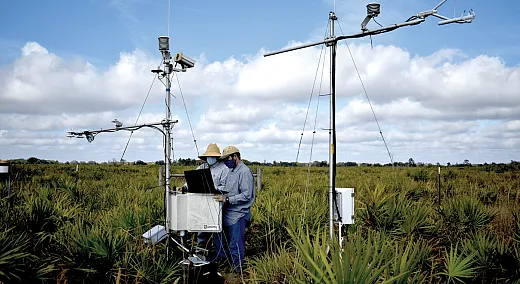
Testing Collaborative Adaptive Rangeland Management in Colorado
After the Dust Bowl ravaged the shortgrass steppes of the Western Great Plains in the 1930s, the federal government bought back homesteaders’ land to establish an experimental rangeland in northeastern Colorado. Today, the Central Plains Experimental Range (CPER) is home to an LTAR Common Experiment studying how to sustain livestock production systems and achieve ecosystem services in the semiarid region.
“We’re right on the cusp between where it is viable and inviable … for cropland agriculture,” says David Augustine of conditions in the area. As such, the region is divided into about 35% cropland and about 60% rangeland. Augustine, an ecologist at the USDA‐ARS Rangeland Resources & Systems Research Unit in Fort Collins, CO, points to rainfall as an Achilles’ heel for beef production in region. “The challenge is not just the low amount but the unpredictability of the precipitation from year to year.”
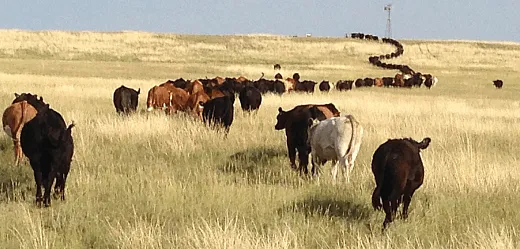
This leads to unpredictable and varying forage supply that can’t always meet animal demand. Ranchers running cow‐calf operations don’t want to have to buy and sell animals in response to drought because they want to maintain the genetics in their herd. Producers in the region typically maintain a yearling operation, retaining steer calves and grazing them for a second summer on the native rangeland, Augustine explains. But with uncertain vegetation availability, “how do you match animal demand for forage with forage supply rate?” And how does this affect other animals on the rangeland that use the vegetation for habitat? The Central Plains Experimental Range hosts several declining populations of bird species. Grassland bird population overall in the U.S. has dropped 53% in the last five decades, according to the American Bird Conservancy, and keeping habitat intact is a priority in the region.
These three components—vegetation, livestock production, and grassland bird habitat—are the focus of the Common Experiment at CPER. Within the Common Experiment framework, Augustine and fellow researchers compare the prevailing method of grazing management, traditional rangeland management (TRM), with a novel strategy, collaborative adaptive rangeland management (CARM). In TRM, livestock graze continuously through the season. A CARM approach involves rotating grazing livestock between portions of the pasture throughout the season while allowing stakeholders to make adaptations to the strategy while implementing it.
“There’s been decades of debate around how we can use rotational grazing management to improve outcomes in ranches,” Augustine says. The research team wanted to be more flexible than other previous studies of the practice. “We realized, OK, we better not do this alone,” Augustine says. They brought in a stakeholder group of ranchers, land management agencies, and conservation NGOs concerned with grass and bird conservation issues “to help think through how we could be more adaptive.” The group included representatives from Crow Valley Livestock Cooperative, Inc.; USDA‐NRCS, USDA Forest Service; Colorado State Land Board; Colorado State Extension; Environmental Defense Fund; and Bird Conservancy of the Rockies.
In the CARM treatments, the stakeholders make all the decisions on implementation. They choose the stocking rate, rotation, which pastures they want to rest or graze, the sequence used in rotation, and criteria for moving the cattle. The scientists provide the stakeholders with data on outcomes and implement the TRM experimental treatment, keeping the stocking rate the same as what the ranchers are choosing in the CARM treatments.
The team began the project several years before the Common Experiment was formally instigated, and in their paper “The LTAR Grazing Land Common Experiment at the Central Plains Experimental Range: Collaborative Adaptive Rangeland Management,” they reflect on what they learned from the first five years of research and how they’ve changed their decision‐making based on the results (https://doi.org/10.1002/jeq2.20599). The region didn’t experience a drought over that period, so the researchers couldn’t answer questions addressing variable precipitation. “This very unpredictable rainfall … is a big challenge, but perhaps not one that we are going to readily solve,” Augustine acknowledges.
They did find that the CARM treatment boosted bird habitat. But it reduced livestock weights by 12–16%, likely due to altered foraging behavior by livestock when in large pastures at high stocking rates. When they’re in large herds, steers forage in more linear pathways and at a slower clip. “You can think about being at a buffet and other people are taking the food fast, so you just take what’s right there in front of you,” Augustine explains. “How you distribute them spatially in their herd size and the rotation does influence their foraging behavior, which influences their diet quality and thus their weight gain.”
From these insights, the researchers and stakeholders decided to cut the stock density and herd size in half, resulting in two herds staying in each pasture twice as long. They’ve begun to analyze the experiment’s second five years; Augustine thinks the split herd did somewhat shift foraging behavior to be a little more selective, as expected. The team is still processing data from the 2023 growing season, “but I think the benefits have been small enough, and the negative consequences for beef production have been large enough, that … we are going to shift to larger pastures,” Augustine says.
Overall, the Common Experiment at CPER shows the value of baking collaboration with stakeholders into projects from the beginning. It’s also a reminder of the necessity of long‐term research, as Augustine says they’re just starting to see some subtle shifts in productivity in the 2023 season data. “The point is, you don’t just start a rotational grazing program and double your productivity in a couple of years.”
Tackling Environmental and Socioeconomic Needs in the Mississippi River Basin
On one of the LTAR network’s cropland sites 1,000 miles away, uncertain precipitation is also a problem. The Lower Mississippi River Basin (LMRB), a region of six states spanning from the southern part of Missouri to the Gulf Coast of Louisiana and including the alluvial plain on either side of the Mississippi River, is home to the Lower Mississippi River Basin Long‐Term Agroecosystem Research Site. A total of 18 million acres in the LMRB region are occupied by row crop agriculture, mostly soybeans, cotton, corn, sugarcane, and rice. And despite the area’s subtropical conditions, one critical environmental challenge is the depletion of water resources.
“Even though we live in a humid climate, rainfall does not always occur when it is needed,” says SSSA and ASA member Martin Locke, a soil scientist at the USDA‐ARS National Sedimentation Laboratory in Oxford, MS. Millions of gallons of water are withdrawn from the Mississippi River Valley alluvial aquifer daily during the growing season. “The demand for irrigation water from that aquifer rivals that of the Central Valley in California and the Ogallala in the High Plains,” Locke says. As such, water is a major cost for producers.
Ecologically, agricultural runoff affects water quality and can induce hypoxia, like in the well‐documented “dead zone” in the Gulf of Mexico. But there’s also hypoxia in lakes and rivers all throughout the region, threatening the resilience of aquatic ecosystems. Streams are becoming increasingly ephemeral, and in summer, some stream flow is from irrigation runoff, Locke says. Soil health is also a problem in the LMRB. The region’s alluvial soils, high in silt and clay, are prone to erosion and compaction with intensified agriculture.
And beyond the fields, rural communities in the Mississippi Delta face serious socioeconomic obstacles. “As you travel along through the region, past fields of crops, you can see rural towns that lack grocery stores where they can purchase fresh food,” Locke elaborates. “The infrastructure in the rural towns is hurting, and Mississippi has the highest food insecurity in the United States.” Reduced opportunities for agricultural employment in the region have also hit these communities hard.
The LMRB Common Experiment’s goal is to maintain sustainable row crop agriculture in the region and address these barriers. In their paper “The LTAR Cropland Common Experiment in the Lower Mississippi River Basin,” Locke and his co‐authors report on the methods and goals of the project (https://doi.org/10.1002/jeq2.20577). Researchers on the project, counting soil scientists, hydrologists, ecologists, and engineers, work closely with a stakeholder group including Delta Farmers Advocating Resource Management, Mississippi State University (MSU) National Center for Alluvial Aquifer Research and Mississippi State Water Resource Research Institute, USDA‐NRCS, and the participating farmers.
In line with the Common Experiment, researchers at LMRB compare and analyze established and alternative agricultural practices on four farm sites in northwest Mississippi. On half of the farms, the producers manage their operations as they would without any input from the researchers. On the other half, the research team has asked the farmers to maintain three basic management practices: reduced tillage, cover cropping (the farmers select the crop), and precision irrigation (using field moisture sensors and automated controls).
The researchers initiated the experiments in 2021. They’re sampling soil, vegetation biomass, runoff water, eddy covariance data, and other metrics while also developing approaches and methods for collecting socioeconomic information. “We’re working with a sociologist at Mississippi State University to conduct interviews with our producers to gain insight into the human dimension perspective,” Locke says.
Across the prevailing and alternative treatments, the team will analyze core performance indicators that all the cropland sites have been asked to address. “These indicators provide a measure of how well management practices are doing,” Locke says. “That’s how we arrive at how management practices might influence different aspects of the system.”
The LTAR cropland Common Experiment in the LMRB will provide farmers information on how to enhance the sustainability of their agricultural operations. In the meantime, the project also illustrates how the LTAR network provides opportunities for new lines of inquiry in existing projects. “Networking with other research groups … across the nation has widened the scope of our potential research impact,” Locke says. One offshoot spawned from the project addresses the issue of food insecurity by incorporating cover crops into management practices. “This new small project is looking at using edible plants such as greens as cover crops,” Locke says. “The research goals address the environmental aspects of the cover crops while perhaps having added benefits of providing a source of locally grown food.”
Locke also points to the LTAR network’s value in cultivating the next generation of scientists. “This network is growing from the bottom up as young scientists are recognizing that there are opportunities to interact with a wider range of scientists nationwide and allowing them to take on leadership roles and gain wider recognition of their research,” he says. “I wish I had the opportunity when I was a young scientist to become involved in a national network like this.”
Managing Ranchland With Fire in Florida
Water quality and availability are also challenges in the Headwaters of the Everglades and the Peace River watershed in Florida, home to another LTAR site. Four of the nation’s 10 largest cow‐calf operations are located in Florida, and the state’s Archbold Biological Station–University of Florida (ABS‐UF) LTAR site plays a unique role in the network representing subtropical humid grazing lands.

While most other LTAR grazing land sites are dry—semiarid or arid—“we get a lot of rainfall,” says Maria Silveira, a soil scientist at the University of Florida and member of SSSA, ASA, and CSSA. “It increases the global relevance of LTAR because there’s a lot of grazing lands across the globe that are in subtropical humid [climates],” agrees Boughton, the agroecologist at Archbold Biological Station. Both Silveira and Boughton are leads on the Common Experiment at the ABS‐UF LTAR site, which is also unique as a joint site encompassing Archbold Buck Island Ranch and the University of Florida Range Cattle Research and Education Center, and as one not led by a USDA‐ARS research center. “We bring a lot of uniqueness because we come from a different perspective,” Silveira says.
The larger region is noteworthy, too, for its high biodiversity. Florida is home to more than 4,000 species, 269 of which are endemic and many of which are threatened or endangered. Grazing lands can act as crucial habitat for the region’s flora and fauna, Boughton explains. “If you can keep ranches on the landscape, then we have the wildlife habitat and the wildlife corridors… which is good for ecology,” she says. “The conservation of biodiversity and the water intersect with this agricultural community. That’s what makes it really interesting to work here.”
But keeping ranches on the landscape is a tall order. Urban encroachment imperils many agricultural operations in Florida, which boasted the fastest‐growing population of any state in the U.S. between 2022 and 2023. The researchers have seen firsthand how urban sprawl is swallowing up grazing land. “I had a rancher that was in tears one time when I was talking to him because he told me about how the ranch he used to work on is now a huge development,” Boughton says.
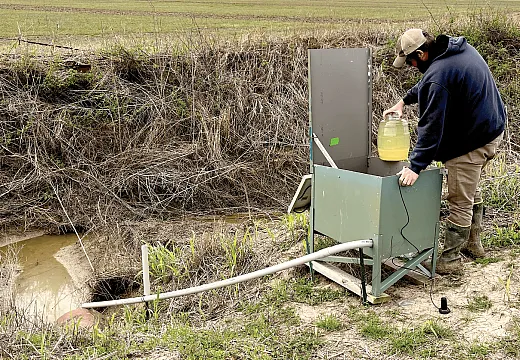
Beef operations in central Florida face environmental challenges, too. The large amount of ranchland in the region contributes to downstream nutrient loads, impacting water quality. Soils in the region have low nutrient‐holding capacity, Silveira points out. “The soils, the hydrology, the climactic conditions are very conducive to nutrient transport. That makes it even more important to manage those ranges in a way that provides ecosystem services but doesn’t cause any unintentional environmental impact,” she says. Cattle’s contribution to CH4 and N2O emissions are also concerns as are the nutritional value of the forage they’re grazing on. Historic fire suppression on the rangelands has shifted the native vegetation composition and decreased its productivity.
This issue of fire is central to the Common Experiment at ABS‐UF LTAR. At their site, the researchers compare prevailing systems with alternative fire management and grazing practices, testing the frequency and size of prescribed burning as well as stocking rate and rotational stocking. They’re also evaluating new methods of nutrient and forage management.
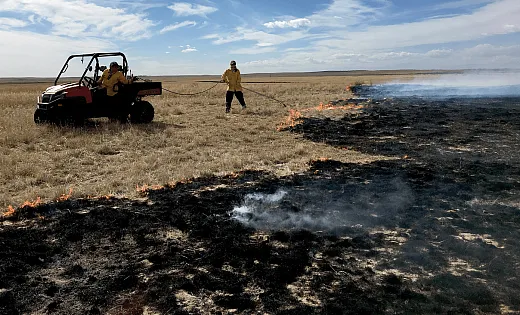
“We look at a very holistic mix of variables that are designed to represent the system from the production, the environmental, and the social and the economic responses,” Boughton says. Their experimental sites represent the diversity of grazing lands in Florida. “There’s not just one type of plant community that’s grazed; it’s pastures and then semi‐nature pastures and native rangelands and wetlands,” Boughton continues. “We try to do the experiment in all of those different types so that it’ll make our research more broadly relevant to most grazing lands.”
As shared across the Common Experiment, “ultimately the goal is to increase productivity,” Silveira says. For beef operations in Florida, that specifically means “having more calf production with minimal environmental impact that could also translate into financial benefits, too.”
When the researchers became a part of the LTAR network, they tapped their deep existing connections with beef cattle producers, grazing land managers, state agencies, and conservation groups. From those groups, the research team assembled a technical advisory committee with whom they discuss the research and incorporate stakeholders’ priorities into their studies. They interact with the clientele daily, and their feedback often alters or augments the projects they’re doing. On the UF side, Silveira also works closely with university extension to deliver the science generated through the LTAR project.
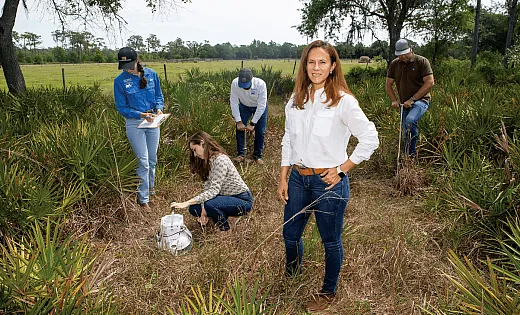
In their paper “The LTAR Grazing Land Common Experiment at Archbold Biological Station–University of Florida,” Boughton, Silveira, and their co‐authors lay out the project’s framework, future, and challenges thus far (https://doi.org/10.1002/jeq2.20593). In landscapes that have been less intensively managed, the reintroduction of fire after many years of suppression takes time to see responses. The very act of implementing fire is also tough. State restrictions prevent them from burning in dangerous, too‐dry conditions while too‐wet conditions stop a fire before it can even start. “It’s not a laboratory where you can control every single variable,” Boughton says. The project is in its first iteration and will continue to develop in conversation with stakeholders, the researchers say.
The hopeful end result of the LTAR experiment at Archbold Biological Station–University of Florida? “Keeping ranching in Florida and keeping it a viable industry,” Boughton says. But another outcome is the education of young scientists. Like Locke at the Lower Mississippi River Basin LTAR site, Silveira emphasizes the Common Experiment and greater network’s utility as an opportunity for education. “We have a very strong commitment to student training,” she says. “We’re using the LTAR project to train the next generation of scientists.”
DIG DEEPER
Check out the research highlighted in this article:
Augustine, D. J., Derner, J. D., Porensky, L. M., Hoover, D. L., Ritten, J. P., Kearney, S. P., … & the CARM Stakeholder Group. (2024). The LTAR Grazing Land Common Experiment at the Central Plains Experimental Range: Collaborative adaptive rangeland management. Journal of Environmental Quality.https://doi.org/10.1002/jeq2.20599
Locke, M. A., Witthaus, L. M., Lizotte, R. E., Heintzman, L. J., Moore, M. T., O’Reilly, A., … & Johnson, F. E. (2024). The LTAR Cropland Common Experiment in the Lower Mississippi River Basin. Journal of Environmental Quality.https://doi.org/10.1002/jeq2.20577
Boughton, E. H., Silveira, M. L., Swain, H., DeLong, A., Sclater, V., Azad, S., Bracho, R., Saha, A., & Sonnier, G. (2024). The LTAR Grazing Land Common Experiment at Archbold Biological Station–University of Florida. Journal of Environmental Quality.https://doi.org/10.1002/jeq2.20593
Text © . The authors. CC BY-NC-ND 4.0. Except where otherwise noted, images are subject to copyright. Any reuse without express permission from the copyright owner is prohibited.





